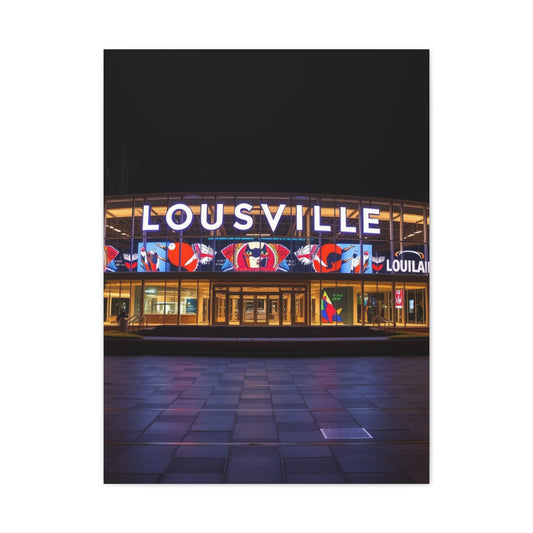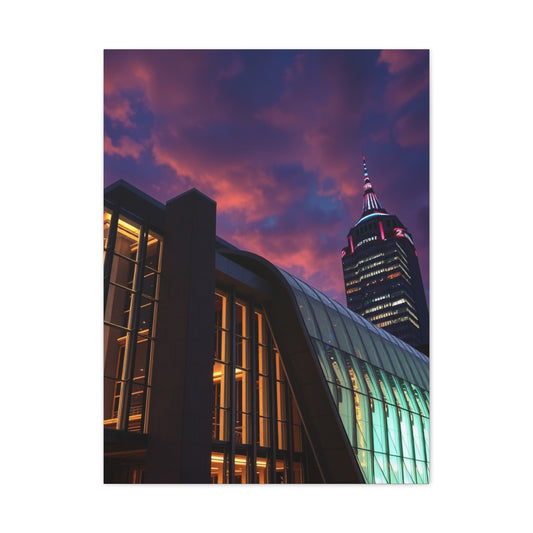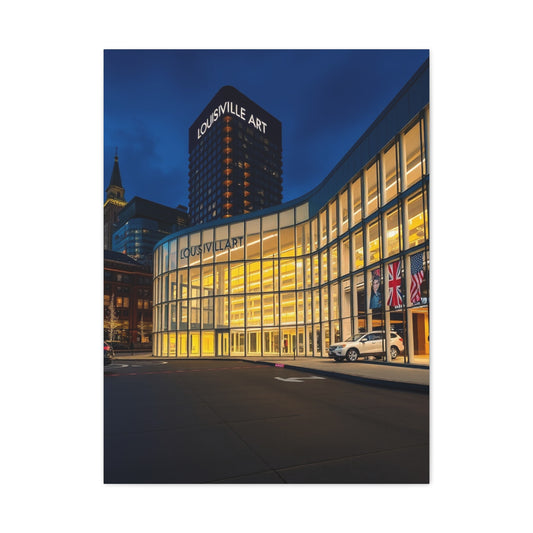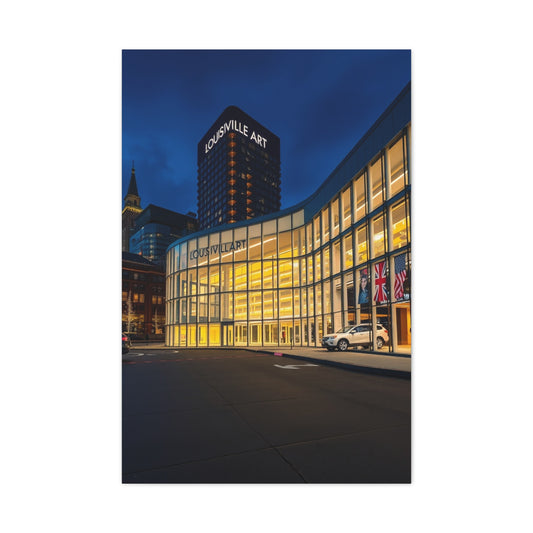Shortlisting ideas for wall painting in your dining room can be both exciting and overwhelming. The dining room is more than just a space for eating; it is a central hub of social interaction and shared moments. Choosing the right wall color can transform the atmosphere, making it inviting, lively, or serene depending on the mood you wish to create. While traditionally, dining room walls are seen as extensions of the living room or neutral spaces, modern homeowners are increasingly exploring creative wall painting techniques to elevate the dining experience. These techniques not only add aesthetic appeal but also reflect the personality and style of the household.
Dining Room Wall Painting With A Vintage Vibe
Creating a vintage-inspired dining room wall is a way to evoke nostalgia while adding character to the space. A vintage wall often mirrors the charm of heritage buildings, where walls that have aged gracefully contribute to the ambiance. Homeowners can achieve this effect using painting techniques such as color washing, rag rolling, or sponging, which add depth and texture to the walls. These techniques mimic the aged, slightly imperfect finish of older structures, giving the room a lived-in and cozy feel. Complementing this style with rustic furniture, vintage chandeliers, and antique wall decor can complete the look, creating a space that feels warm, inviting, and timeless. The charm of a vintage dining room is its ability to blend history with contemporary functionality, allowing homeowners to enjoy a space that honors the past while catering to present needs.
Wall painting that evokes a vintage appeal is versatile, allowing for the use of muted, earthy tones or faded shades that offer a sense of warmth. Layering different textures on the walls can further enhance the old-world feel. For instance, combining matte and glossy finishes or introducing subtle patterns can create a sophisticated yet relaxed dining environment. In addition, artwork and decorative pieces from different eras can be strategically placed to amplify the vintage atmosphere. By integrating these elements thoughtfully, the dining room becomes more than a place to eat; it becomes a setting for storytelling and shared experiences, where every meal is framed by an aesthetically pleasing backdrop.
English Tea House Themed Dining Room Wall Painting
An English tea house-themed dining room is an excellent choice for those who appreciate a quaint, cozy, and inviting atmosphere. This style often incorporates paintable wallpaper, allowing homeowners to customize colors and patterns according to their preference. The use of warm, earthy tones, paired with subtle floral or patterned designs, creates a welcoming environment ideal for hosting tea parties or casual gatherings. Essential furnishings include an elegant dining table, comfortable chairs, a floor lamp for soft lighting, and a chandelier that adds a touch of sophistication. Wall clocks, framed pictures, or shelves with decorative items can enhance the theme, creating a harmonious and functional space.
In this theme, attention to detail is key. Accessories such as crockery, vases, and decorative items should complement the wall colors and patterns, reinforcing the overall ambiance. Paintable wallpaper offers flexibility, allowing the introduction of motifs, gradients, or subtle textures that reflect the classic charm of an English tea house. This approach encourages homeowners to experiment with combinations of colors and patterns while maintaining coherence with the rest of the dining room decor. The result is a space that exudes warmth and sophistication, making every meal or tea gathering a memorable experience for family and guests.
A Dining Room With A Beautiful Dark Green Accent Wall
Accent walls are a powerful tool in interior design, allowing a bold color to define a space while harmonizing with the surrounding environment. In dining rooms, dark shades such as deep green, navy, or charcoal can add drama and elegance, creating a focal point that captures attention. A dark green accent wall, for example, pairs beautifully with lighter neutral tones on adjacent walls, balancing vibrancy with serenity. The use of art pieces or framed photography on the accent wall further draws the eye, enhancing the visual impact. Complementing furniture, such as wooden cabinets, elegant dining tables, velvet chairs, rugs, and statement lighting fixtures, integrates with the accent wall to create a cohesive design.
Choosing a bold accent wall requires careful consideration of lighting, space dimensions, and furniture placement. Dark colors tend to make a room feel smaller, so balancing with adequate lighting and reflective surfaces is essential. Incorporating natural light through windows or using artificial lighting strategically ensures that the space remains open and welcoming. The accent wall serves as a backdrop, allowing other decorative elements to shine while grounding the overall design. By thoughtfully selecting complementary textures, finishes, and furnishings, homeowners can create a dining space that feels sophisticated, comfortable, and visually captivating, turning every meal into a refined experience.
Brushstroke-Textured Dining Room Wall Painting
Textured wall painting adds a unique dimension to dining rooms, making the walls themselves a point of interest. Brushstroke textures, in particular, create movement and depth, transforming a simple wall into an artistic statement. This technique involves using varying brush sizes, strokes, and patterns to achieve a visually engaging finish that appears both handcrafted and contemporary. Walls with brushstroke textures work well in modern and eclectic dining rooms, as they introduce an element of creativity and playfulness. Pairing textured walls with complementary furniture, pendant lighting, and minimalist accessories allows the texture to remain the focal point without overwhelming the space.
The beauty of brushstroke textures lies in their versatility. Colors can be blended or layered to produce gradients, highlights, or shadow effects that enhance the room’s atmosphere. For instance, soft blues or muted neutrals with subtle brushstroke patterns create a calming environment, while brighter tones with dynamic strokes inject energy and vibrancy. Incorporating artwork, rugs, and lighting that harmonize with the textured walls ensures a balanced design. Textured painting techniques encourage homeowners to explore creativity, offering a personalized and visually stimulating dining space that sparks conversation and admiration.
A Dining Room With Playful Paint Colors
Introducing playful colors into the dining room is an excellent way to infuse energy and personality into the space. Shades such as pink, blue, yellow, or orange can create an uplifting and cheerful atmosphere. Soft pinks, for instance, evoke tranquility and warmth, making the dining room suitable for intimate dinners, family meals, or casual brunches. Combining a primary wall color with subtle accents or secondary shades allows for depth and visual interest. The choice of furniture, storage solutions, and decor should complement the color palette to create a cohesive and vibrant environment.
Playful colors also provide flexibility in styling. Homeowners can experiment with color blocking, subtle gradients, or complementary patterns to introduce uniqueness without disrupting harmony. Integrating multifunctional furniture, such as foldable tables or modular storage units, enhances usability while aligning with the lively color scheme. The combination of thoughtful furniture placement, engaging wall colors, and accent elements produces a dining room that feels energetic yet comfortable, encouraging connection and interaction. Playful paint colors are ideal for those who seek a dynamic and expressive environment where every meal is enjoyed in a cheerful setting.
Wall Painting Design For A Regal Dining Room
A regal dining room evokes sophistication, elegance, and a sense of grandeur. This design style often blends understated wall colors with luxurious furnishings to create a majestic ambiance. Soft, muted shades, such as cream, taupe, or light grey, can form the perfect backdrop, highlighting ornate furniture and decorative elements. For those seeking a more opulent effect, jewel-toned walls like deep burgundy, emerald green, or royal blue can immediately draw attention and create a sense of drama. The key to achieving a regal dining room is balance. Walls should enhance the room’s furniture and accessories rather than compete with them.
In addition to color, textures play an essential role in regal wall painting. Paintable wallpaper with subtle patterns or a silk-like finish can add depth and sophistication. The use of gilded frames, ornate mirrors, and classic artwork complements the overall aesthetic, reinforcing a palace-like atmosphere. Lighting is another critical element. Chandeliers, wall sconces, and strategically placed lamps can cast a warm glow that highlights the rich textures and colors of the walls. A regal dining room is not just about luxury; it is about creating an immersive experience where every meal feels like a special occasion.
Furniture choices are integral to enhancing the regal theme. Dining tables with carved details, high-back chairs, and sideboards in rich finishes complement the wall colors and textures. Accessories such as crystal vases, gold or bronze accents, and elegant rugs contribute to the atmosphere without overwhelming it. When selecting wall colors for a regal dining room, it is essential to consider how natural and artificial light will interact with the tones, ensuring the room remains inviting at all times of the day.
Sensational Stripes For The Dining Room Walls
Stripes are a timeless design element that can transform dining room walls dramatically. They offer an opportunity to play with proportions, create visual interest, and inject a sense of energy into the space. Vertical stripes can make ceilings appear taller, enhancing the room’s sense of height, while horizontal stripes can widen a narrow space, giving a sense of openness. The width, color, and finish of the stripes all influence the final effect. Subtle, muted stripes produce an understated elegance, while bold, contrasting stripes make a strong, modern statement.
Implementing stripes on dining room walls requires careful planning. The choice of color palette is crucial; coordinating stripes with furniture, flooring, and decorative accents ensures a cohesive look. Using painter’s tape and precise measuring techniques will guarantee clean, sharp lines that reflect professionalism and attention to detail. Another approach is to combine stripes with texture, such as a matte and gloss finish combination, which adds depth and visual intrigue. Accent walls with stripes can be particularly effective, drawing attention to specific areas such as a buffet table, artwork, or architectural features within the room.
Stripes also allow for creative freedom in expressing personality. For instance, pastel-colored stripes convey a soft, playful vibe, ideal for family-oriented dining rooms. Deep, rich tones create a formal and sophisticated ambiance suitable for formal dinners or entertaining guests. Designers often recommend pairing striped walls with minimalistic furniture to let the walls take center stage or using patterned rugs and cushions to tie the colors together. Ultimately, stripes are versatile, timeless, and offer a method to inject personality and structure into the dining space.
The Role of Color Psychology in Dining Rooms
Understanding color psychology is essential when selecting dining room wall paints. Colors influence mood, appetite, and interaction, making them a vital consideration in dining room design. Warm tones such as reds, oranges, and yellows can stimulate appetite and encourage lively conversation. They create a sense of warmth and energy, ideal for spaces intended for family gatherings or entertaining. On the other hand, cool tones like blues, greens, and soft purples evoke calmness and relaxation, suitable for intimate meals or a serene dining experience.
Neutral colors, including beige, cream, taupe, and soft grey, provide versatility and a timeless appeal. They serve as a blank canvas that allows furniture, lighting, and artwork to shine. Combining neutrals with accent walls or subtle textures can enhance depth and interest without overwhelming the room. Color psychology also emphasizes harmony between the walls, furniture, and accessories. Complementary or analogous color schemes can create a cohesive and visually pleasing environment, encouraging comfort and connection during meals.
In addition, using multiple shades within a single color family can add dimension to dining room walls. For example, a gradient effect or ombre finish can provide visual interest and a sense of sophistication. Layering colors with textures, such as sponging, rag rolling, or brushstrokes, allows homeowners to combine the principles of color psychology with artistic expression. By thoughtfully applying these techniques, the dining room becomes not only a functional space but also an environment that subtly influences mood and social interaction.
Combining Patterns and Textures for Visual Impact
Patterns and textures are valuable tools in elevating dining room walls from ordinary to extraordinary. Beyond solid colors, patterns like geometric shapes, floral motifs, or abstract designs can create a dynamic and engaging atmosphere. Textured finishes, such as Venetian plaster, stucco, or raised paint techniques, provide tactile and visual depth that draws attention. Combining patterns and textures allows homeowners to reflect their personality while maintaining balance with furniture and decor.
For instance, a textured wall painted in a muted tone can be paired with a patterned accent wall to create a focal point. Similarly, incorporating subtle textures in stripes, chevrons, or grid patterns introduces dimension without dominating the space. The key is moderation; too many patterns or textures can overwhelm the room, while carefully curated combinations enhance sophistication and intrigue. Consider how natural light interacts with textured surfaces—light and shadow play across the walls can create subtle variations in color, adding a dynamic element to the dining experience.
Additionally, the integration of art, mirrors, and decorative elements can complement patterned and textured walls. Mirrors, in particular, reflect light and expand the sense of space, while artwork introduces narrative and character. Strategic placement ensures that patterns and textures harmonize with furnishings, lighting, and flooring, creating a well-balanced environment. By thoughtfully experimenting with these elements, homeowners can achieve a dining room that is visually stimulating, functional, and memorable.
Harmonizing Wall Colors With Furniture and Accessories
A successful dining room design ensures harmony between wall colors, furniture, and accessories. The choice of paint must consider the materials, finishes, and tones of the furniture and decor. Wooden tables and chairs pair well with warm or neutral walls, while metal or glass furniture complements cooler shades or bold accent colors. Coordinating colors between walls and decorative items such as rugs, cushions, curtains, and artwork reinforces a cohesive aesthetic.
Lighting is another essential aspect of harmonization. Wall colors interact differently with natural and artificial light, affecting how furniture and accessories are perceived. Lighter wall colors can make a small space feel airy, while darker tones create intimacy and elegance. Accent lighting can highlight specific wall features, textures, or patterns, enhancing the overall effect. Homeowners should also consider the durability and maintenance of wall finishes, especially in dining areas where walls are susceptible to stains or wear from daily use.
The balance between wall colors and accessories ensures that the dining room is both functional and stylish. Coordinated color palettes provide visual continuity, while contrasting accents introduce interest and prevent monotony. By paying careful attention to how walls, furniture, lighting, and accessories interact, the dining room becomes a well-curated space that enhances meals, conversation, and overall ambiance.
Brushstroke Techniques to Elevate Dining Room Walls
Brushstroke techniques allow dining room walls to become expressive, artistic canvases. Unlike flat, uniform wall colors, brushstroke textures create visual depth, movement, and an organic feel. The technique involves varying the direction, pressure, and consistency of paint application to produce a layered effect. Depending on the brush size and paint viscosity, walls can exhibit subtle texture or a bold, dramatic pattern. This method is versatile, working well with modern, eclectic, and contemporary dining spaces.
Using brushstroke textures allows homeowners to infuse personality into their dining rooms without overwhelming the furniture or decor. Soft, vertical strokes in muted colors create a serene and elegant environment, while horizontal or diagonal strokes in vibrant tones energize the space. These textures can also be combined with accent walls or complementary hues to enhance contrast and focal points. Lighting plays a crucial role in brushstroke-painted walls; directional light highlights texture, revealing nuanced variations in color and form. This interaction between light and surface can transform a simple wall into a dynamic and engaging backdrop for meals and gatherings.
Furniture and accessories should complement brushstroke walls rather than compete with them. Minimalistic dining tables, neutral-toned chairs, and understated decor elements allow the wall to be the centerpiece of the room. Incorporating natural materials such as wood, stone, or linen further enhances the organic feel created by textured paint. By thoughtfully integrating brushstroke techniques, homeowners can achieve a dining room that is both visually striking and conducive to social interaction.
Ombre Walls for Subtle Sophistication
Ombre walls create a gentle transition between two or more colors, producing a soothing and sophisticated effect in dining rooms. This technique can be executed vertically, horizontally, or diagonally, allowing designers to experiment with direction and intensity. Lighter shades at the top blending into darker tones at the base add depth and dimension, creating a sense of height and spaciousness. Ombre walls work particularly well with muted or pastel palettes, creating calm and inviting dining environments.
To achieve a seamless ombre effect, careful blending of paint layers is essential. Multiple coats and gradual color transitions ensure smooth gradation without harsh lines. Homeowners can choose colors that complement their furniture and decor, such as soft greys blending into white for a minimalist aesthetic, or peach transitioning to coral for a warmer, energetic vibe. Ombre walls also serve as excellent backdrops for artwork, mirrors, or wall-mounted decor, as the subtle color shifts enhance visual interest without overpowering the room.
Lighting significantly impacts the perception of ombre walls. Natural daylight emphasizes the smoothness of color transitions, while artificial lighting can create additional layers of depth and contrast. Pairing ombre walls with textured furnishings, soft rugs, and minimalistic dining accessories completes the look, ensuring that the space feels harmonious and thoughtfully curated. This approach allows homeowners to introduce a modern, artistic element while maintaining a welcoming and functional dining environment.
Using Bold Colors to Make a Statement
Bold colors in dining room walls create energy, personality, and a focal point that instantly draws attention. Shades such as deep red, emerald green, navy blue, or mustard yellow provide drama and sophistication, elevating the space from ordinary to extraordinary. Bold colors can be applied to an entire wall, multiple walls, or selectively as accent areas to define specific zones within the dining room.
Choosing a bold color requires careful consideration of balance and harmony. For instance, pairing dark, saturated tones with lighter furniture or neutral decor prevents the room from feeling heavy or overwhelming. Bold colors can also complement architectural elements such as moldings, paneling, or built-in shelving, creating a visually striking environment. Accent lighting and decorative accessories further enhance the impact, ensuring the color enhances the overall design without becoming overpowering.
In addition, bold wall colors can define the mood of the dining room. Warm hues such as red and orange stimulate conversation and appetite, making them ideal for lively family dinners. Cooler shades like deep blue or forest green introduce calm and sophistication, perfect for intimate dinners or formal entertaining. Layering textures and finishes, such as matte and gloss or subtle metallic accents, adds dimension and richness to bold-colored walls, ensuring they remain elegant and engaging.
Themed Wall Painting for Unique Dining Experiences
Themed wall painting allows homeowners to express their creativity and tailor the dining room to specific aesthetics or lifestyles. For example, a coastal theme can incorporate soft blues, sandy neutrals, and subtle wave-like textures, evoking a serene seaside ambiance. A botanical theme uses green hues, leafy patterns, and natural textures to bring freshness and vitality into the space. Each theme should harmonize with furniture, lighting, and decorative elements to create a cohesive and immersive experience.
Custom paintable wallpaper or murals is an effective way to achieve themed walls. It allows for intricate designs, gradients, or patterns that may be difficult to create manually. The theme can be reinforced through decor such as matching tableware, rugs, curtains, or art pieces. Careful selection of colors and motifs ensures the dining room remains elegant while expressing personality. Themed walls also offer versatility for seasonal adjustments or occasional refreshes. Homeowners can adapt minor elements such as accent colors or accessories to reflect holidays or special occasions without major renovation.
Lighting remains a critical consideration in themed wall painting. Highlighting key elements of murals or patterns with spotlights or wall-mounted lamps enhances their visual appeal. Combining ambient, task, and accent lighting ensures the dining space is functional, inviting, and aesthetically pleasing. By creating a themed environment, homeowners can make meals feel special and entertaining, transforming routine dining into a memorable experience.
Combining Multiple Techniques for a Cohesive Design
Integrating multiple wall painting techniques in a single dining room can yield a sophisticated and dynamic result. For instance, an accent wall using bold color can be paired with textured brushstrokes or subtle ombre effects on adjacent walls. Stripes, patterns, or murals can be incorporated strategically to create focal points while maintaining balance. This approach encourages experimentation while ensuring cohesion and harmony within the space.
When combining techniques, color palettes must be carefully chosen to avoid visual clutter. Complementary and analogous colors provide a harmonious backdrop, while subtle variations in texture and finish add depth. For example, a muted ombre wall can coexist with a metallic-accented brushstroke wall, creating visual interest without overwhelming the senses. The selection of furniture, lighting, and accessories should be aligned with the chosen techniques to ensure continuity. Natural materials, soft textiles, and minimalistic decor help anchor complex wall designs, making the room comfortable and inviting.
Homeowners should also consider the psychological impact of combining techniques. Each wall design contributes to mood, energy, and social interaction. Balanced combinations encourage relaxation and conversation while providing a visually stimulating environment. Careful planning, color sampling, and consultation with design experts can help achieve the desired effect, resulting in a dining room that is both functional and aesthetically compelling.
Maintaining and Caring for Painted Dining Room Walls
The longevity and visual appeal of dining room wall paints depend on proper maintenance and care. Painted walls are susceptible to wear from furniture contact, accidental spills, and daily use. Choosing durable paints, finishes, and protective coatings ensures the walls remain pristine over time. Semi-gloss or satin finishes are practical for dining areas, as they are easier to clean and resistant to stains while maintaining a sophisticated appearance.
Regular cleaning is essential to preserve colors and textures. Dusting, gentle wiping, or using mild cleaning solutions prevents buildup of grime or discoloration. Textured or patterned walls may require more delicate care, as aggressive cleaning can damage the surface. Homeowners should also consider the placement of furniture and accessories to minimize contact with walls, reducing the risk of scuffs or scratches.
Harmonizing Wall Colors With Furniture
Selecting the right wall color is only part of creating a harmonious dining room. Equally important is ensuring that the walls complement the furniture and decor. The relationship between wall color and furniture can define the room’s mood, influence perception of space, and enhance the overall aesthetic. For instance, dark wood dining tables and chairs often pair beautifully with warm neutrals or rich tones, creating a cozy and inviting environment. Lighter woods or metallic furniture work well with cooler or pastel shades, adding an airy and contemporary feel.
The scale, style, and finish of furniture also impact the choice of wall color. Ornate or heavy furniture benefits from subtle, muted walls that allow the furnishings to stand out without overwhelming the space. Minimalist or modern furniture, on the other hand, can be paired with bold or textured walls, which create visual interest while complementing the clean lines of the furniture. Upholstery, cushions, and rugs provide opportunities to echo or contrast wall colors, reinforcing a cohesive design. Attention to detail in furniture placement and color coordination ensures the dining room feels intentional, polished, and visually balanced.
Lighting, both natural and artificial, further affects how wall colors interact with furniture. Sunlight enhances the warmth and vibrancy of hues, while artificial lighting can subtly shift the perception of color. For example, yellow-toned lighting may deepen the richness of earthy walls, while cool-toned bulbs may highlight greens or blues. Considering these effects when selecting paint colors ensures a harmonious look throughout the day and evening.
Seasonal and Mood-Based Color Choices
Wall colors in the dining room can be adapted to reflect seasons, moods, or occasions, providing versatility and freshness to the space. Warm, earthy tones such as terracotta, mustard, or golden hues evoke the coziness of autumn and enhance feelings of intimacy during family gatherings. Soft pastels like blush, mint, or pale blue are ideal for spring and summer, creating a light, airy, and uplifting environment. Deep shades like navy, emerald, or burgundy can be reserved for winter or formal occasions, adding drama, elegance, and sophistication.
Mood-based color choices allow homeowners to tailor the dining experience to the intended ambiance. Bright, cheerful colors stimulate conversation and social interaction, making them perfect for lively dinners and celebrations. Calmer shades promote relaxation and focus, ideal for intimate meals or quiet family evenings. Color layering, including accent walls or complementary trims, can further enhance mood, providing dynamic visual interest without dominating the space. Homeowners can also rotate accessories, rugs, and cushions to complement seasonal wall colors, creating a living and evolving environment that adapts to both decor trends and personal preferences.
Careful planning ensures that seasonal or mood-based color choices are harmonious with existing furniture and lighting. Color palettes should maintain continuity, either through analogous combinations for subtlety or contrasting accents for drama. By thoughtfully applying these principles, the dining room becomes an adaptable space that supports a variety of experiences, from casual brunches to formal dinner parties.
Statement Walls for Focal Points
Creating a statement wall is an effective method to draw attention to specific areas of the dining room and create a visually engaging environment. Statement walls can be achieved through bold colors, textured finishes, patterns, murals, or accent lighting. Typically, a single wall is chosen as the focal point, often the one directly facing the entrance or behind the dining table. The design should stand out while remaining cohesive with the rest of the room, ensuring balance and harmony.
Bold colors like deep green, royal blue, or vibrant red make a statement without overwhelming the space when used strategically. Textured finishes, such as brushstrokes, sponging, or faux techniques, add depth and intrigue. Murals or thematic wallpapers introduce narrative elements, giving the room personality and character. Accent lighting, whether through spotlights, wall sconces, or concealed LEDs, enhances the statement wall by highlighting textures, colors, and design features.
Statement walls also serve functional purposes beyond aesthetics. They can visually anchor the dining area within an open-plan layout, define zones in multifunctional spaces, or act as a backdrop for artwork or decorative collections. When planning a statement wall, homeowners should consider the size and scale of the wall, furniture placement, and sightlines, ensuring the wall becomes a harmonious centerpiece rather than a visual distraction.
Combining Patterns and Solid Colors
Combining patterns and solid colors is a popular approach to creating depth and personality in dining rooms. Solid-colored walls provide a clean canvas, while patterned sections introduce visual interest and texture. For example, a solid neutral wall can be paired with a patterned accent featuring stripes, geometric shapes, or floral motifs. This combination creates a balanced aesthetic, allowing homeowners to incorporate both subtlety and creativity into the design.
The key to successfully combining patterns and solid colors is proportion and placement. Patterns are often used on one or two walls or in strategic areas such as behind the dining table, on cabinetry, or near architectural features. Solid colors provide visual relief, preventing the space from feeling cluttered or chaotic. Coordinating patterns with furniture, flooring, and accessories ensures cohesion. For instance, patterned cushions or rugs can echo wall motifs, reinforcing design harmony without overwhelming the room.
Textures can be integrated with patterned and solid walls to further enhance interest. For example, combining a subtle textured wallpaper with a bold, solid-colored accent wall adds dimension and tactile appeal. Careful use of lighting accentuates textures and patterns, producing a dynamic and inviting environment. By thoughtfully combining patterns and solids, homeowners can achieve a dining room that feels lively, engaging, and perfectly tailored to their style.
Artistic Murals and Custom Wall Art
Artistic murals and custom wall art offer a unique way to personalize dining room walls. A mural can reflect nature, abstract forms, or cultural motifs, creating a strong visual impact and conversation starter. Custom wall art allows homeowners to integrate personal tastes, family history, or artistic preferences into the space. Both approaches transform walls into focal points and enhance the overall ambiance.
Murals can be painted directly on the wall or applied using large-scale removable wallpapers. Large-scale abstract designs or soft scenic depictions complement furniture and lighting, ensuring the space remains functional and balanced. Custom wall art, including framed paintings, wall panels, or mixed-media installations, provides flexibility for rearrangement or seasonal updates. Lighting plays a critical role, highlighting details, textures, and colors while creating depth and atmosphere.
Integrating murals and wall art with color palettes and room themes ensures cohesiveness. For example, a muted-toned mural can harmonize with pastel furnishings, while a bold abstract piece complements minimalistic furniture. By strategically placing murals and custom art, the dining room becomes a curated space where meals are framed by creative expression, enhancing both aesthetics and the overall dining experience.
Layering Textures and Finishes
Layering textures and finishes adds dimension and sophistication to dining room walls. Combining smooth, matte finishes with glossy or metallic accents creates visual contrast and depth. Textured paints, stucco, plaster, or faux finishes can be layered with patterns, stripes, or murals to enhance richness and complexity. This approach elevates the dining room, transforming walls from mere backdrops into integral design elements.
Consideration of how furniture, lighting, and accessories interact with layered textures is crucial. Reflective surfaces, such as glass or metallic décor, enhance textured walls by catching light and creating dynamic effects. Subtle layering, such as combining an ombre background with soft brushstrokes, adds interest without overwhelming the senses. Color harmonization is essential; complementary tones and consistent palettes ensure layered textures remain cohesive and visually pleasing.
Layered textures also influence mood and perception of space. Smooth, neutral layers can make a room feel expansive, while intricate textures introduce intimacy and focus. Layering finishes encourages experimentation and creativity, allowing homeowners to design a dining room that is both visually captivating and tailored to lifestyle needs. Proper planning ensures that layered walls remain elegant, functional, and aligned with the overall design vision.
Accent Walls to Transform the Dining Space
Accent walls are an effective way to add personality and focus to dining rooms without overwhelming the entire space. By choosing one wall to highlight, homeowners can introduce bold colors, textures, or patterns while maintaining balance with the rest of the room. Often, the accent wall is positioned behind the dining table or opposite the entrance to draw immediate attention. Its purpose is to create a focal point, anchor the room visually, and provide contrast to surrounding walls.
Selecting the right color for an accent wall depends on the desired atmosphere. Deep, rich tones such as navy, burgundy, or forest green create sophistication and intimacy, perfect for formal dining settings. Brighter colors like mustard, coral, or teal add vibrancy and energy, ideal for lively gatherings or casual meals. Textured finishes, including brushstroke effects, faux plaster, or metallic accents, further enhance the visual appeal. Incorporating patterns or murals on accent walls can also provide a narrative element, reflecting personal taste or cultural motifs.
The impact of an accent wall extends beyond aesthetics. In open-plan layouts, it can define the dining area within a larger living space, creating a sense of separation without the need for physical dividers. Lighting plays a crucial role in accent walls; well-placed sconces, pendant lights, or spotlights highlight textures and colors, amplifying the design’s effect. Complementary furniture and accessories should harmonize with the accent wall to ensure the space remains cohesive and inviting.
Combining Multiple Colors for a Dynamic Look
Using multiple colors in dining room walls adds depth, energy, and visual interest. Rather than relying on a single shade, layered color schemes or complementary contrasts can create a dynamic environment. Techniques include color blocking, where walls or sections are painted in distinct shades, or gradient effects, which transition seamlessly from one tone to another. The choice of colors should harmonize with furniture, lighting, and accessories to prevent visual overload.
Color combinations can be subtle or bold, depending on the desired mood. For example, pairing soft neutrals with muted pastels creates a serene and sophisticated atmosphere. Contrasting bright shades like teal and mustard or coral and navy introduces vibrancy and excitement. Multiple colors can also be used strategically; one wall may feature a bold hue, while adjacent walls use softer complementary tones, maintaining balance and preventing the room from feeling chaotic.
Accents such as patterned cushions, rugs, and decorative items can reinforce the color scheme, tying together various elements of the room. When multiple colors are used effectively, dining rooms feel lively, personalized, and visually engaging. Thoughtful integration of color enhances mood, encourages social interaction, and transforms the space into a memorable setting for meals and gatherings.
Integrating Lighting With Wall Colors
Lighting is essential in showcasing the beauty of painted dining room walls. Natural light reveals the true hue of colors, while artificial lighting can enhance textures, deepen tones, or create ambiance. Consider how wall colors change throughout the day as sunlight moves across the space. Lighter shades reflect light, making small rooms feel larger, while darker tones absorb light, adding intimacy and elegance.
Artificial lighting should complement the wall color and overall design. Warm-toned lights enhance earthy and rich colors, creating a cozy and inviting atmosphere. Cooler lights highlight blues, greens, and pastel shades, emphasizing calmness and sophistication. Layered lighting—combining ceiling lights, pendant lamps, wall sconces, and accent lights—ensures that walls are consistently illuminated and textures are highlighted.
Strategic placement of lights can accentuate focal points, textures, or accent walls. For instance, spotlights or picture lights can emphasize artwork or decorative elements, while pendant lights above the dining table draw attention to the immediate dining area. Light reflections on textured or metallic finishes add depth and dynamic visual effects, enhancing the overall appeal. By thoughtfully integrating lighting with wall color, homeowners create a dining room that is functional, comfortable, and visually captivating at all times of the day.
Using Natural Elements in Wall Design
Incorporating natural elements into wall design enhances warmth, texture, and connection to nature. Materials such as wood panels, stone cladding, bamboo finishes, or natural fibers introduce organic textures and visual interest. Even painted walls can emulate natural elements through faux finishes, brushstroke textures, or earthy tones. Integrating these elements contributes to a dining environment that feels grounded, inviting, and aesthetically pleasing.
Wood-paneled walls provide warmth and elegance, especially when paired with complementary furniture and neutral tones. Stone or brick finishes add texture and character, creating a rustic or industrial ambiance. Earth-toned paints in shades like terracotta, sand, or olive further enhance the natural aesthetic, encouraging relaxation and comfort during meals. Combining natural elements with subtle lighting enhances depth and richness, emphasizing textures and materials.
Plants and greenery can also complement natural wall designs. Vertical gardens, potted plants, or wall-mounted planters bring freshness and vitality, creating a calming environment. By combining natural textures, organic colors, and greenery, dining rooms transform into inviting spaces where family and guests feel connected to the environment, enhancing the overall dining experience.
Minimalistic Wall Painting for Modern Dining Rooms
Minimalistic dining room walls rely on simplicity, clean lines, and restrained color palettes to create a modern, elegant atmosphere. Neutral tones like white, beige, grey, or soft pastels dominate minimalistic designs, providing a calm and uncluttered backdrop. The focus is on quality finishes, subtle textures, and thoughtfully selected furniture and decor, rather than complex wall patterns or bold colors.
Minimalistic walls often use accent lighting or a single statement piece to add visual interest. A textured wall, monochromatic mural, or bold art piece becomes a focal point, while the remaining walls remain simple and understated. This approach highlights furniture, lighting, and accessories, emphasizing form, proportion, and balance. Minimalism in wall design also creates a sense of spaciousness, making the dining room feel airy and comfortable even in smaller spaces.
Materials and finishes contribute to minimalistic appeal. Matte finishes reduce glare and maintain subtlety, while soft gloss or satin finishes add refinement without distraction. Textures like smooth plaster, subtle brushstroke effects, or lightly patterned wallpaper can be incorporated sparingly, ensuring cohesion with the minimalist ethos. Proper integration of these elements produces a dining room that is elegant, functional, and visually calming.
Expert Tips for Creating Versatile Dining Walls
Creating versatile dining room walls allows homeowners to adapt the space for different occasions, moods, or design updates. Choosing neutral or semi-neutral base colors provides flexibility for seasonal changes, accent walls, or accessory updates. Textures, patterns, and subtle decorative elements can be introduced or rotated without requiring a complete repaint, ensuring longevity and adaptability.
Layered wall designs contribute to versatility. Combining paint techniques, textures, and accent areas allows the room to evolve over time. For instance, a base wall in a neutral tone can accommodate murals, bold color accents, or patterned panels as trends or preferences change. Furniture, lighting, and accessories should also be flexible, complementing walls while enabling easy updates.
Regular maintenance enhances the versatility and aesthetic appeal of dining room walls. Durable finishes, protective coatings, and routine cleaning ensure walls remain vibrant and pristine, regardless of high traffic or frequent use. Consulting design experts or testing paint samples can help homeowners anticipate the impact of light, color, and texture, ensuring walls remain adaptable and visually cohesive. By combining flexibility, careful planning, and thoughtful execution, dining room walls become timeless, functional, and aesthetically versatile spaces suitable for everyday use or special occasions.
Creating a Cohesive Dining Room Design
A well-designed dining room begins with cohesion between walls, furniture, lighting, and decor. Wall painting plays a central role in establishing harmony and setting the overall tone. Choosing colors and textures that complement furniture and accessories ensures a seamless flow. For example, soft neutral walls pair beautifully with wooden dining sets, while bold accent walls can energize modern metal or glass furniture. Cohesion is achieved when each element feels intentional, contributing to a balanced and inviting atmosphere.
Beyond furniture and color, cohesion involves the integration of lighting, flooring, and decorative items. Pendant lights, chandeliers, or sconces can highlight wall textures and enhance the dining experience. Rugs, curtains, and table linens in complementary tones reinforce the color palette, tying together all visual elements. The goal is to create a dining space where walls serve as a canvas that supports, rather than competes with, the room’s furnishings. A cohesive design not only enhances aesthetics but also encourages comfort and social interaction, making meals more enjoyable for family and guests.
Balancing Bold and Subtle Elements
Balancing bold and subtle elements is key to designing striking yet harmonious dining rooms. While bold colors, patterns, or textures can create focal points, subtle tones provide relief and prevent visual overload. For instance, a deep green accent wall paired with neutral adjoining walls maintains drama while preserving balance. Similarly, textured or patterned walls can be complemented with simple furniture and accessories to avoid clutter.
The balance between bold and subtle elements also influences the perceived size and mood of the room. Dark, intense colors create intimacy, while lighter shades expand space and reflect light. Strategic placement of bold elements ensures the room remains inviting and proportionate. Subtle tones can be used for secondary walls, trims, or ceilings, providing contrast and harmony. When executed thoughtfully, the interplay between bold and subtle aspects produces a visually engaging dining space that feels both sophisticated and comfortable.
Incorporating Artistic Features
Artistic features such as murals, wall panels, or custom artwork transform dining rooms into visually captivating environments. Murals allow for creative storytelling, introducing landscapes, abstract designs, or cultural motifs that reflect personal taste. Wall panels in wood, metal, or textured finishes add depth and sophistication, while framed artwork serves as a rotating focal point for seasonal updates or personal expression.
Integration of artistic features requires consideration of scale, proportion, and placement. A mural should complement furniture and lighting without overwhelming the room, while wall panels should be aligned to enhance symmetry and structure. Framed artwork provides flexibility and can be rotated or replaced to refresh the design. Lighting plays a vital role in highlighting these artistic elements, drawing attention to textures, details, and colors. By incorporating artistic features thoughtfully, dining room walls become a centerpiece of creativity and elegance, enhancing the overall dining experience.
Enhancing Atmosphere With Texture
Texture is a powerful tool for enhancing the atmosphere of dining rooms. Smooth, matte finishes convey simplicity and modernity, while textured finishes such as brushstrokes, sponging, or plaster introduce depth and tactility. Combining textures with color or pattern can produce a dynamic visual effect, making walls feel alive and engaging. Textured walls interact with lighting, creating variations in tone and shadow that evolve throughout the day, adding dimension and interest.
Natural textures, such as stone, wood, or linen-inspired finishes, bring warmth and a sense of connection to the environment. Metallic accents or glossy surfaces can add sophistication and reflect light, creating visual intrigue. In addition to aesthetics, texture influences mood. Soft, subtle textures promote calm and relaxation, while bold, pronounced textures energize and stimulate conversation. By thoughtfully selecting and layering textures, homeowners can create dining rooms that are visually rich, comfortable, and suitable for various occasions.
Functional Considerations in Wall Design
While aesthetics are critical, functionality should guide wall design choices in dining rooms. Walls in high-traffic areas must be durable, easy to clean, and resistant to stains or scratches. Paint finishes like semi-gloss or satin are practical options, providing a balance between elegance and maintenance. Textured or patterned walls can camouflage minor imperfections, adding both visual appeal and practicality.
Wall placement and color should also consider the room’s layout and use. Accent walls can define dining zones in open-plan spaces, while lighter shades enhance natural light in smaller rooms. Storage integration, such as wall-mounted shelves or cabinets, can be designed to harmonize with painted walls, offering both function and style. Thoughtful wall design ensures the dining room is not only beautiful but also practical, supporting daily life and enhancing convenience during meals or entertaining.
Bringing Personality to Dining Room Walls
Personal expression is a defining feature of memorable dining rooms. Wall painting allows homeowners to infuse their tastes, cultural heritage, and creative vision into the space. The choice of colors, patterns, textures, or artistic features can reflect personality while harmonizing with the room’s overall design. Whether opting for bold, dramatic statements or subtle, understated elegance, walls are a canvas for self-expression.
Personal touches can include custom murals inspired by family experiences, color palettes that evoke cherished memories, or themed walls reflecting hobbies or interests. Accessories, framed art, and decorative items complement the wall design, reinforcing individuality. By aligning personal expression with cohesive design principles, dining rooms become more than functional spaces—they become environments that convey character, evoke emotion, and create memorable experiences for all who gather there.
Conclusion:
When planning dining room wall painting, several final considerations ensure a successful outcome. Sampling paint colors in natural and artificial light helps anticipate color shifts throughout the day. Testing textures or patterns on small sections prevents surprises during full-scale application. Coordinating wall colors with furniture, lighting, flooring, and accessories ensures a cohesive and harmonious design.
Maintenance and longevity are also important. Selecting durable paint finishes, protective coatings, and practical materials ensures walls remain attractive over time. Flexible design choices, such as accent walls, removable wallpapers, or interchangeable artwork, allow for seasonal updates or evolving preferences without extensive renovation. Consulting with design experts or experimenting with small-scale test areas can provide insight and confidence, making the process smoother and more rewarding.
Ultimately, dining room walls should balance aesthetics, functionality, and personal expression. A well-painted wall sets the tone for meals, enhances conversation, and transforms routine dining into memorable experiences. By considering color psychology, texture, lighting, furniture integration, and individual style, homeowners can create dining rooms that are visually captivating, practical, and inviting. The result is a space where every meal feels special, every gathering becomes memorable, and walls are not merely a backdrop but an integral part of the home’s character and charm.




























